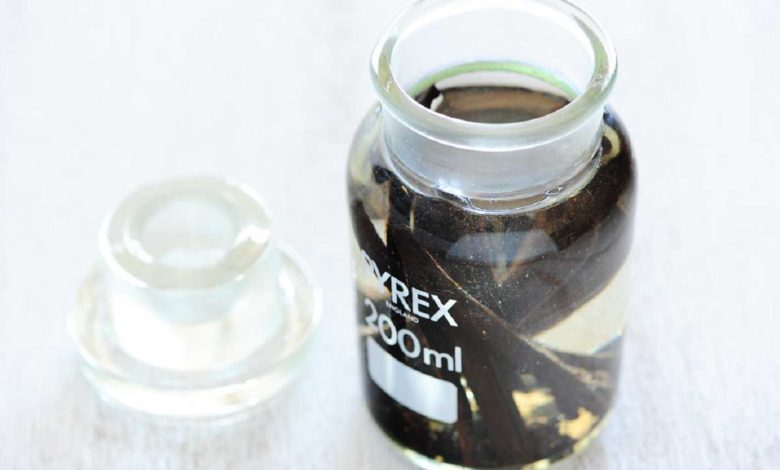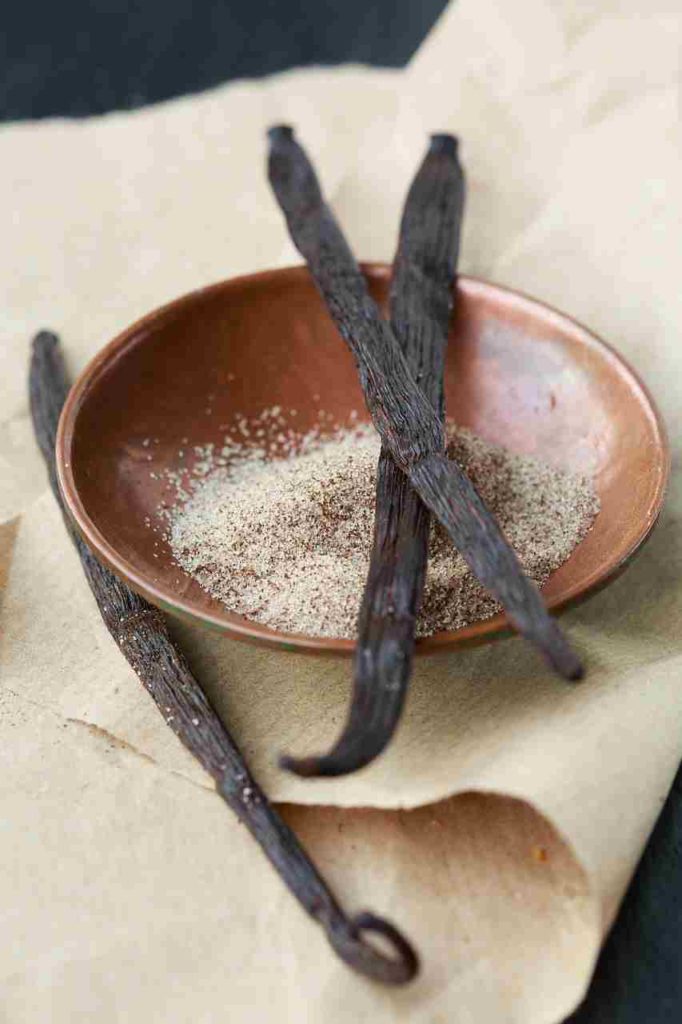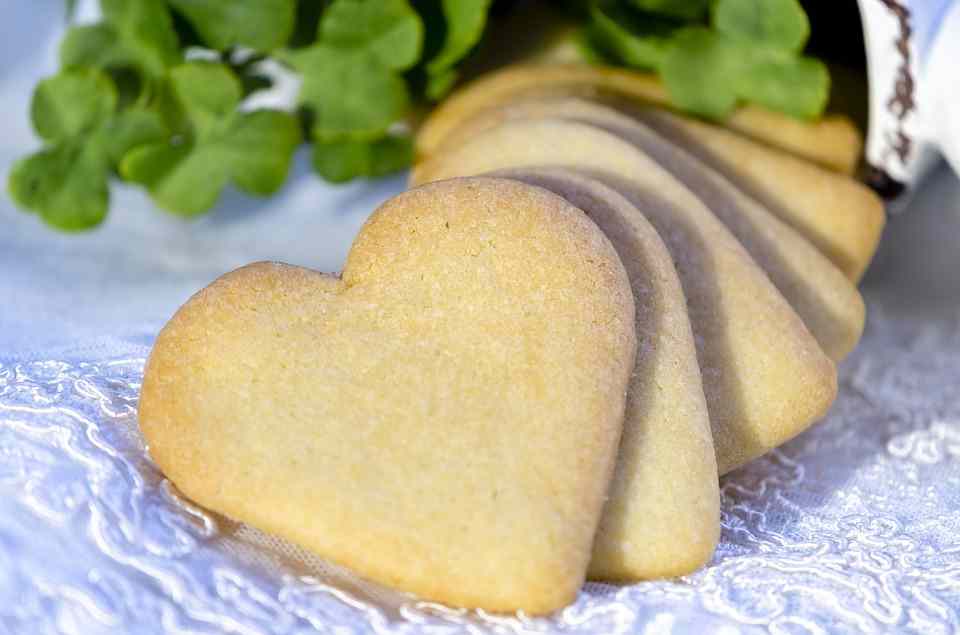Vanilla Extract for Teething Baby: Uses, Safety and The Potency of Vanilla Extract

Teething brings discomfort and irritation to babies. Vanilla extract for teething has been in practice for a long time and will continue to be. To relive baby’s upset stomach, swollen gums and pains vanilla extract will do the job for you.
Vanilla extract is safe, efficient and a natural remedy for teething. Although the SAFE dosage quality is not scientifically approved. As infants grow, they grow teeth within the first few months of their life, while others do not start the uncomfortable process until closer to a year.
The best potent home remedy for teething baby is vanilla extract. Vanilla extract for teething has shown several credence to relieve babies from teething pain and it has also been used to relieve babies from other discomforts.
Many parents have written to us, asking questions like: Does vanilla extract help teething babies? Is vanilla extract good for teething? Is vanilla safe or poisonous? And many more. This post will help answer all these questions and also clear all doubts on vanilla extract for teething baby.
Table of Contents
Vanilla Extract for Teething and its Potency
Vanilla contains soothing agents that can decrease an infant’s anxiousness. Additionally, the quantity of alcohol found in the extract creates a warm, comforting sensation.
Lots of orthodox medicine advocates have promoted vanilla’s unique properties. Scientific research is not totally in support of a few of these uses, it can’t be refuted that vanilla’s medical use has a long and standing history. The claims that vanilla extract for teething is most useful to your baby.

First, it has some well-known anti-bacterial properties that can help the immune system. That’s always a plus, specifically for the infant who spends more time in the daycare. Because it helps them fight off illness-causing germs that could come from the surroundings
Vanilla extract for teething is good. It is soothing to an infant, minimize anxiousness. It helps babies to relax and soothe teething sore. Vanilla baths are also helpful; a bowl of vanilla gelato can give your baby some form of relief.
Also, vanilla has been found to aid digestion. When an infant is teething, she’s certain to have some stomach problems. All that stress, anxiety and also crying is bad for their little tummies. A little vanilla can assist maintain and bring tranquility to the stomach.
Finally, vanilla is known to have anti-inflammatory residual properties. This vanilla extract for teething babies is extremely crucial. like any other pain medications, vanilla can act on the source of the pain and bring relief to your baby.
Does Vanilla Extract Help Teething Babies?
Rubbing a little vanilla extract on a baby gum was found to calm a crying child. In a vanilla solution, soak a damp cloth and apply on the gum of your baby. This gives the sore gum a soothing relief and helps babies relax.
Vanilla extract for teething as a natural remedy works in three ways:
- Creating an opposite pressure by simply rubbing the baby’s gum can ease the pain.
- The alcohol in vanilla extract produces a warm, momentarily soothing sensation.
- Lastly, this treatment may work because of vanilla’s soothing properties.
Vanilla extract for teething is regarded as a soothing yet energizing agent that decreases anxiety and fosters health feelings. Also, vanilla has long been used to treat stomach distress: a baby whose stomach is slightly disturbed by crying or swallowing large quantities of drool can find that both the tummy and the nerves are calming with vanilla.

Shop for pure vanilla extract here
Baby Teething Timeline
Early childhood experts agree that teething typically begins when babies are about 4-months-old and continues until he or she is around 2-years-old. Most babies teeth early — around three months old, and some teeth later, giving parents a few extra months to worry less about teething discomfort.
The order of the cycle usually continues in relatively regular stages once babies begin teething. The two lower-middle milk comes first; the four upper middle teeth come second, then incisors, and then furthest forward molars, then eventually the back molars, appear after.
In several babies, the first teeth can be the easiest because the teeth are small and thin, making it much less difficult to cut through the gum tissue than the large molars.
Why Do Teething Babies Bite?
An unhappy companion can be an infant whose teeth are breaking forth, but some babies do not seem to mind the transition. Since the tooth breaks and cuts through the gum, it is natural for babies to feel pain, swelling and urge to bite.
Crankiness can lead to biting, it is a sign that shows your baby is teething. placing pressure on sore gums from the outside balances the pressure exerted by the rising tooth and numbs the pain — until the pressure from the outside stops.
It’s a well-known fact that everything goes into the mouth once a baby hits the teething age. It can be a pain for nursing mothers when the child you’ve been waking up to feed unexpectedly bites you, but try not to take it personally.
Stop your baby and, in your “I mean it” speech, tell them “no biting!.” Some babies won’t stop biting when nursing, in this case, moms usually decide either to wean their children or continue breastfeeding their baby.
Signs and Symptoms of Teething
The warning signs and indications of teething are numerous and different. Pain in the mouth can affect any part of the body, as anyone who has suffered chronic toothache will tell you.
The signs and effects of teething are numerous and diverse as pain in the mouth can affect any part of the body as anyone who has suffered chronic toothache will tell you.
How to Know When Your Child Is Teething?
First of all, he or she should be around three months and a year old and has no teeth yet. Some indications of teething are glaringly obvious;
- Drooling
- Wakefulness
- Crankiness
- Crying often
- Biting, chewing and tender gums, etc.,
Other signs of teething can be much less glaringly obvious:
- Babies may refuse to eat or drink even if its milk.
- Baby might have a mouth-rash.
- Saliva in skin-folds provides an avenue for a fungal infection that irritates the baby’s delicate skin.
- There may be a runny nose.
These are the little well-known signs of teething in babies that you can watch out for.
How are the gums of Teething Infant look like?
Teething gums look equally much as you’d expect them to: they could appear swollen and reddish or with sore. They may have small white spots on them, or you might see tiny holes where a tooth would be in a day or two.
You may notice loose stool in the diaper as the infant is dribbling and swallowing more saliva than how you imagined it to be.
Loose bowel movements may be a result of teething, however, if there is anything other than a diaper with an extra poopy, take action promptly! When a baby stool shows a fever, appears slimy or bloody, or a violent stooling, you should see a doctor for treatment as diarrhea may not be linked to teething.
Is Normal for A Teething Baby to Have Fever?
Fever in infants is a sign of infection, that is why mothers feel baby’s forehead immediately when they notice a baby is not feeling well. Gum inflammation may cause low fever, but consult your pediatrician if your baby is running a temperature. For a teething baby, restlessness, crying and nagging is a norm, but fever is not. Fever is an indicator that tells you all is not okay.
An infant undergoing teething will be agitated at night, but be more joyful in the day because he/she has things to distract them. However, a kid with an ear infection will get cranky even in the daytime as the pain he is feeling isn’t what he can be distracted from.
Parenting begins with getting used to the sight of blood first, so when your teething child starts bleeding from the mouth, you may be terrified. Start by cleaning away the blood and look at her gums before you leap into any assumptions (assuming your baby is okay). Often small cysts may develop when a tooth is about breaking through the gums and breaks open when pressure increases.
Is Vanilla Extract Good for Teething?

Vanilla extract for teething has a strong awful taste; it doesn’t go down easy. Pushing it down your baby’s mouth won’t go without a fight. Instead, they baked it into their cookie. Vanilla extract contains 35% alcohol. Compare this with most gins or tequilas with an alcohol level of around 40 percent.
In the early 1990s, parents do put a little whiskey in a baby’s bottle when he/she is teething. And these kids go on sleeping afterward. This process is no more in use as cases of alcohol poisoning were the order of the day.
I think my parents simplified the phase for me by just rubbing a little whiskey on my gums while I was teething. This method had worked, according to them. I’m not going to advise you on do the same!
In that vein, vanilla extract for teething is only permissible in a little quantity, rub on baby’s gums. No matter how you look at it a product with that amount of alcohol shouldn’t put into your baby mouth in large quantity.
Many recommend against using alcohol for pain relief while teething, especially medical journals and pediatrician. A high level of alcohol in a baby’s body may result in alcohol poisoning.

Is the Alcohol in Vanilla Extract Safe for Babies?
Yes! vanilla extract is safe for babies. However, parents should use just few drops for their babies. The alcohol level in vanilla may lead to alcohol poisoning for babies if given in large dosage. It is better to put 2 to 3 drops when adding vanilla extract to milk for baby.
Imitation vanilla extract for teething, is a product of choice especially for parents who might not want to give their baby alcohol.
Takeaway
All right, we’ve covered all questions raised and clarified some of your doubts about vanilla extract for teething babies. With no doubt, I believe that vanilla is probably the best pain reliever when it is in its purest form, but there are other ways to use vanilla for teething pain.

Add vanilla pod into your baby’s yogurt, freeze the vanilla yogurt and serve it to her. The cold and the vanilla in the yogurt make a perfect mix. You may also shop for teething biscuits with vanilla flavor, find the type she wants and take it with her. A diluted amount of vanilla may as well help soothe the discomfort, also chewing activity would go a long way to help tooth crack through her gums. Also, these biscuits taste so delicious.
Shop for vanilla-flavored teething biscuits
For added benefit, dip a washcloth in vanilla extract leave in a freezer allow to cool. The cold feeling is good and releases vanilla’s anti-inflammatory goodness into her gums. This will do the trick!!
Kiddiesquare.com does not provide medical advice and this post is not a substitute for professional medical advice, diagnosis or treatment. If you think you have a medical emergency, call your doctor immediately.
This post may contain Affiliate links, which means we may earn a small commission, at no extra cost to you when you make a purchase through a link. Read more







